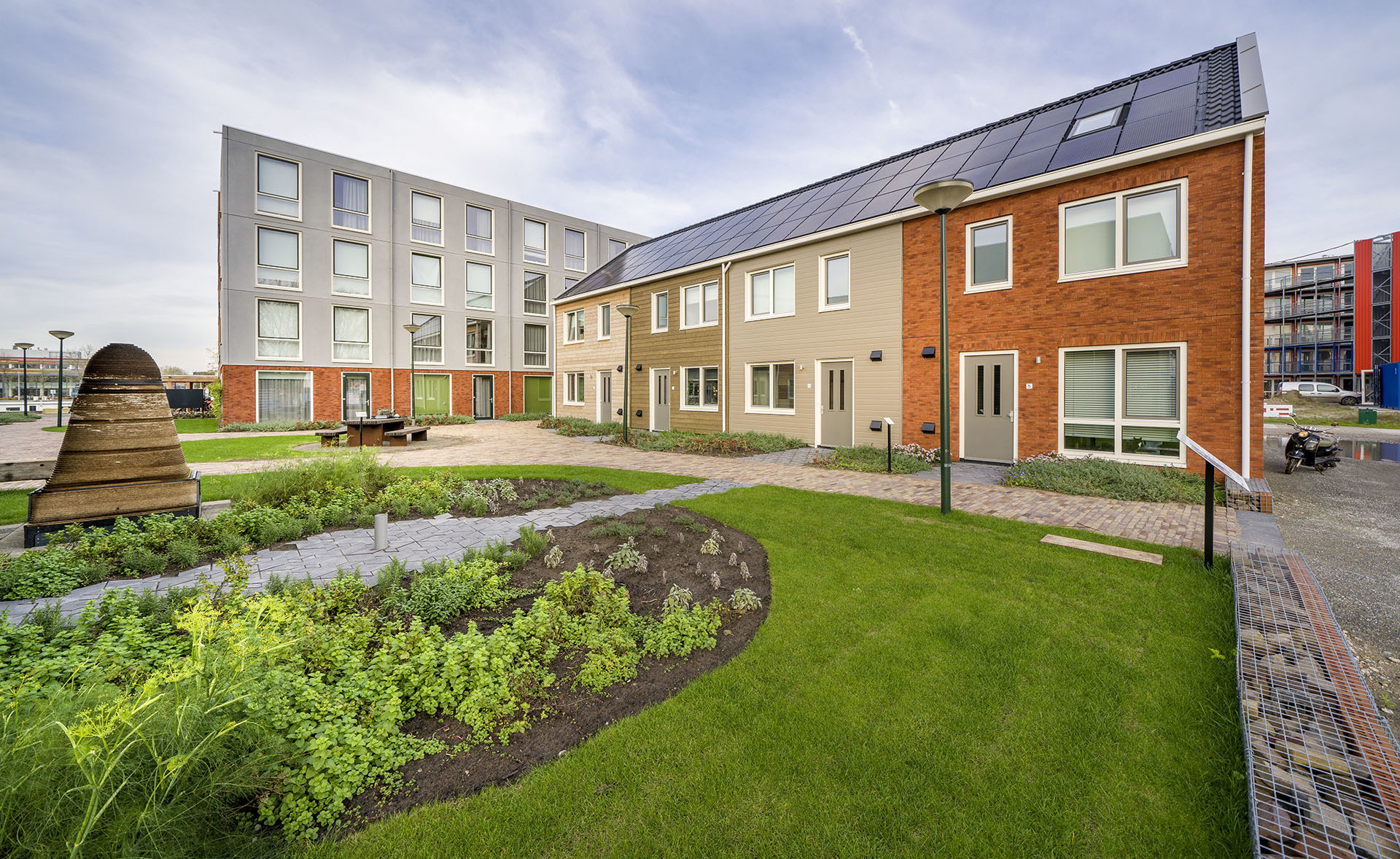Circular building covenant in the making
Many Dutch construction companies and clients have started working with circular construction. But what exactly this form of building means is not yet clear. That is why the ‘Cirkelstad’ (Circle City) platform is working on a covenant, a clear agreement on how circular construction projects should be achieved.
The central government is aiming to have a circular society by 2050, and to be half way to achieving this goal by 2030. To make this possible, the national government has designated the construction sector as one of its spearheads, because this sector consumes a lot of raw materials, energy and water. Several large construction companies and clients – mostly government and semi-governmental organisations – have already started circular construction. A number of these have also joined the Cirkelstad platform, in which professors Hans Wamelink and Ellen van Bueren are also involved. They are responsible for collecting experiences gained in the circular building projects of a number of participants, as part of a project called ‘Samen Versnellen’ (Accelerating Together).

‘Accelerating together’
“Cirkelstad is a network organisation in which frontrunners in circular construction exchange innovations in an early stage. They also want to show the potential in this area”, says Professor Ellen van Bueren. “Their ambition is to accelerate the course towards circular construction and its application through new ways of working, breaking down barriers together and developing standards and practices that should become generally accepted in construction. Known as ‘Samen Versnellen’ (Accelerating Together), by 2023, this should result in a covenant that clarifies what we mean by circular construction and how we want to operationalise it, so that parties do not have to keep reinventing the wheel. This standard has been christened ‘the new normal’”.
Exposing barriers and highlighting opportunities for acceleration
Professor Hans Wamelink: “We are asking the participants for specific building projects as an example of their experiences in the field of innovation and we are trying to find out their way of working. Our own contribution, partly financed by the Accez knowledge programme of the province of Zuid-Holland, comprises collecting experiences in the form of audits, structured questionnaires for clients and contractors. The questions are divided across the themes of materials, energy, water, social and management. We aim to use these audits to expose barriers and highlight accelerations. These may be legislation and regulations, but also the culture within organisations. We have to deal with many parties who all need to complete the extensive audit and provide a lot of data, so organising this process is quite a challenge. But fortunately the parties are quite willing to cooperate”.
Half-yearly reports
Van Bueren: “The first results will be available in October 2020, based on a pilot with eight projects. Then we'll see just what an audit can deliver. Incidentally, we expect that circular construction will develop so quickly that the audit needs to be adaptable and we need to be able to raise the bar when we want to”.
Wamelink: “From October 2020, we will be collecting data from a large number of projects twice a year. We will invite the participants to fill in the spreadsheet right after their design process and we will continue to do so until after delivery, and we want to fully document what happens in the meantime. Differences between design and end result are only to be expected, but we want to learn from this. Do the origins of materials and reuse percentages match the ambitions and is there evidence for this? And what has led to this project actually being achieved in a circular way? Every six months we will produce a report on the ambitions, barriers and accelerators. After three years, this should result in a covenant that all parties involved will sign”.
A look behind the scenes
Van Bueren and Wamelink are enthusiastic about the project. Wamelink: “Cirkelstad is of interest to us because, thanks in part to the involvement of municipalities and construction companies, we are able to gather first-hand information about the approach to circular construction. To my surprise, circular construction is being taken up by the construction industry at a rapid pace. You can already see that a lot of creativity is needed to realise this form of building. We are encountering this creativity in places you wouldn’t expect. Innovation processes in construction are generally slow, but this seems to be an exception to the rule”. Van Bueren adds: “This project gives us the opportunity to take a look behind the scenes of new projects and to hear from the top of organisations what they are up against. The fact that the construction companies can bring in their practical experience is valuable, because there are few other opportunities to hold such project-related discussions with clients and contractors together”.
Wamelink and Van Bueren use traditional instruments such as audits, checklists and covenants to record and communicate environmental ambitions in the construction industry. Wamelink: "We can now see what actually comes out of working with these process-based instruments and how they can be used to achieve substantive ambitions. Besides this, Cirkelstad is also interesting to us as it ties in with the National research organisation NWO-funded project TranCiBo, which looks at the behavioural change that is necessary to get circular building done. The experiences from ‘Samen Versnellen’ act as input for this project”.
Three consultancy agencies in the field of circular building are involved in developing the audits: Copper8, Albaconcepts and Metabolic. During the three years of the project they will also conduct the half-yearly discussions with the ‘Samen versnellen’ participants.